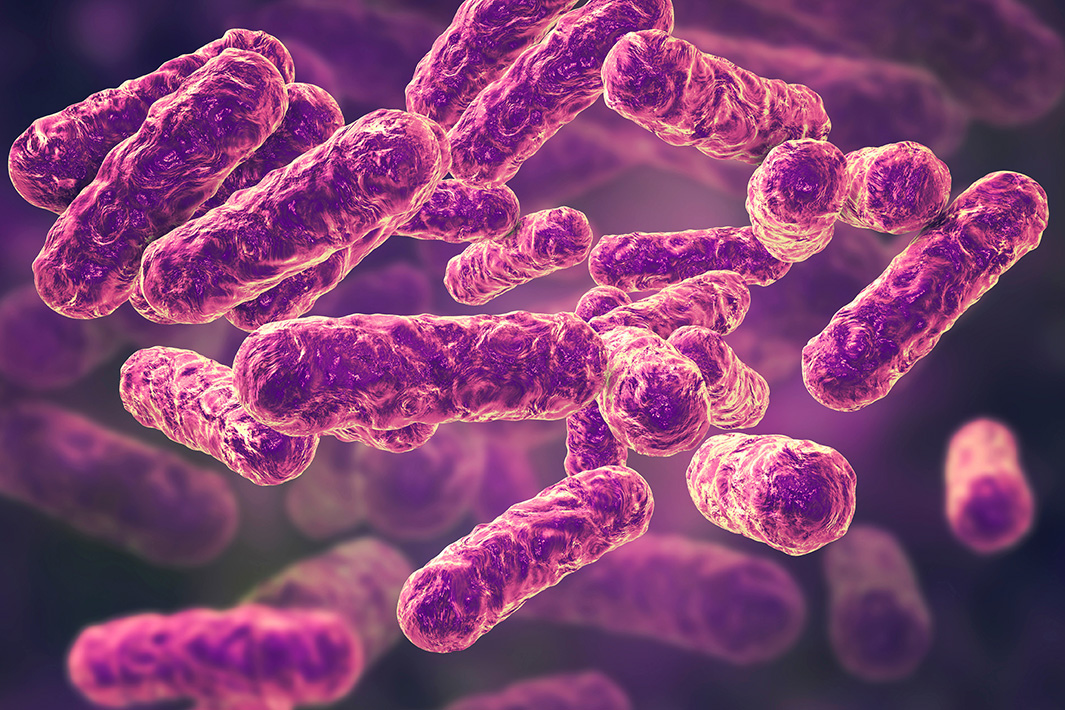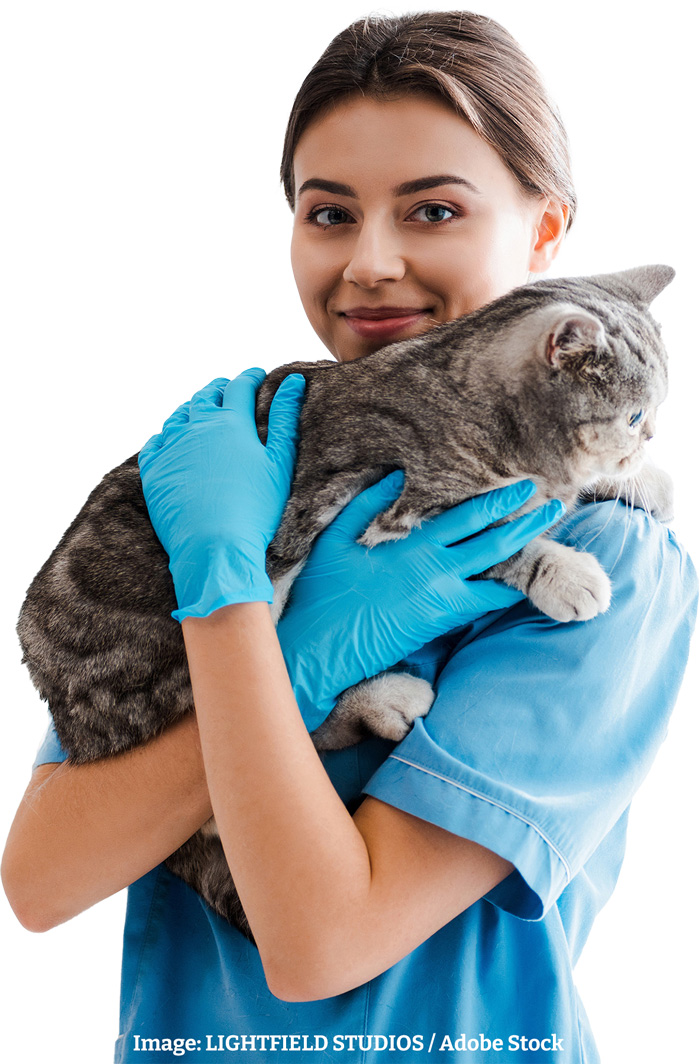23 Apr 2024
One health: in the context of pet ownership
Norbert Mencke discusses the connection between human, animal and environmental health.

Image © Julija / Adobe Stock.
Although the one health programme is not new, it has become increasingly important over the past few years1.
One health is a multi-disciplinary unifying approach that was originally derived from the medicinal and veterinary “one medicine” idea. It was expanded in 2004, by adding the environment into the concept, acknowledging the fact that the health of humans, animals and the ecosystem are inextricably connected2,3.
The one health approach covers many aspects such as food and water safety, nutrition, zoonosis control, pollution management and antimicrobial resistance4. While the threat of zoonoses and antimicrobial resistance made one health initiatives initially focus on food-producing and wild animals, it is clear that small animal medicine also has an important role in public health. The dog is still centre of many one health initiatives5,6, but clearly cats have become increasingly important.
“Project Laurent” is a Canadian interdisciplinary “one health” research programme. It was born from the initiative of Hélène Tessier, a Canadian small animal veterinarian, whose son was diagnosed with liver cancer at the age of 10 years. The family owned a dog at that time which was an important family member and provided enormous emotional support during the son’s journey through chemotherapy and liver transplant.
One branch of Project Laurent works on surveys and studies that are designed to determine the prevalence of zoonotic parasites in both pets and immunosuppressed humans.
The World Small Animal Veterinary Association One Health Committee (OHC), created in 2010, aims to internationally promote the importance of companion animals in the one health concept. The committee works and supports research in the following main areas: the human-companion animal bond; zoonotic diseases; and comparative (medical and veterinary) clinical research. One fascinating OHC project focused on comparative oncology in the search for an optimised drug development for humans and dogs.
Human-animal bond changes
Changes in the human-animal bond have greatly influenced the characteristics of pet ownership over the past decades. Nowadays, dogs and cats are not only kept as work animals (for house protection or rodent control), but also for their social features and their ability to provide companionship5.
In fact, many dogs and cats in today’s households spend most of their life indoors rather than outdoors, and live in close contact with their owners. Especially with cats, a growing trend in some parts of the world exists to give them an “indoor-only” lifestyle7.
At Vetoquinol’s 2nd Scientific Round Table, held in Athens, in March 2023, Ezio Ferroglio, professor of parasitology and parasitic diseases at the University of Turin, Italy, said: “Thanks to the development of effective antiparasitic treatments and a better understanding of parasitic diseases in small animal medicine, the role of dogs and cats has changed from outdoor-living work animals to indoor-residing family members.”

Positive effects of pet ownership
Already in the 1970s, scientists acknowledged the positive role of dogs in psychotherapy for children8. For families with growing children, pets can be part of the social support system and provide opportunities to educate children, and for them to experience nurturance9.
Also, for elderly people, it was shown that owning pets can have socialising effects and stress-reducing benefits, as well as a positive influence on the mental and physical well-being9,10.
Study results have demonstrated that pet-facilitated therapy programmes in nursing homes had positive effects on the emotional and physical health of their residents11,12. The role of dogs and cats became even more important during the COVID pandemic, when social distancing and other countermeasures resulted in social isolation and loneliness, not only for the elderly13,14.
Pet ownership for patients who are immunocompromised
For some patients with chronic medical conditions that include immunosuppression (for example, genetic immunodeficiency, cancer, AIDS), pet ownership might seem to be out of the question, as the risk of acquiring life-threatening infections from pets simply seems to be too high.
Many potential viral, bacterial and parasitic zoonoses exist that can be transmitted from dogs and cats to humans, many of them from bite or scratch injuries15-17.
However, the mental and physical benefits of pet companionship is why many physicians and scientists promote pet ownership also for the vulnerable sections of the human population. Clinical guidelines exist for immunocompromised patients that include recommendations for a life with animals18.
Some uncertainties remain, however, and a lot of knowledge gaps are still present.
Christopher Fernandez-Prada, assistant professor and director of the Parasitology Diagnostic Service at the University of Montreal, Canada, said at Vetoquinol’s 2nd Scientific Round Table: “There is still only limited scientific evidence about what pet ownership does for mental health and lifestyle behaviour in the transplanted immunosuppressed population.
“Moreover, current prevalence data of zoonotic parasites in companion animals are really scarce.”
- The small animal medicine sector is an important part of one health.
- Changes in the human-animal bond have greatly influenced the characteristics of pet ownership over the past decades.
- Pets can positively influence the mental and physical well-being of their owners.
- Pet ownership is possible for vulnerable sections of the human population, such as children, elderly or immunocompromised patients when certain aspects of animal care are respected.
- Small animal practitioners have a key role in pet owner education about zoonotic diseases.
- Adherence to recommended vaccination schedules, regular control of endoparasites and ectoparasites and good personal hygiene are important tools in zoonosis prevention.
One health guidance for pet owners
The American Veterinary Medical Association says: “Veterinarians are the first and best line of defence against animal diseases.”
Indeed, small animal practitioners and their clinic staff have a key role in pet owner education and zoonotic disease prevention. Current zoonosis prevention recommendations for pet owners include a minimum of four criteria5,18:
- Dogs and cats should be taken to the vet for health checks at least once a year.
- Dogs and cats should be up to date with recommended (core) vaccination schedules.
- Dogs and cats should be dewormed at least every three months, and subject to regular flea and tick control.
- Dogs and cats should not be offered any unprocessed raw food.
More specified recommendations exist for households with immunocompromised patients15,17:

- To select the right pet. Reptiles, amphibians, poultry, rodents and exotic pets may have a higher risk of harbouring zoonotic diseases (for example, salmonellosis) which are not easily diagnosed, nor treated. Dogs and cats as pets are considered the better and safer choices for immunocompromised people.
- Dogs or cats should be at least 6 to 12 months old, as young animals are more likely to carry diseases. Also, bite-related infections are more common with young animals.
- Outdoor contact with other pets or wildlife increases the zoonotic risk, and should be avoided. Cats should be kept from hunting.
- Immunocompromised patients should not come into direct contact with faeces (wear gloves or have somebody else remove the faeces), nor clean baskets, cages, litter boxes, aquariums or terrariums.
The following good personal hygiene measures are important for any pet owner, irrespective of their immune status5:
- Hands should be washed after contact with pets (at least before eating and drinking) and after contact with pet equipment, or with raw pet food.
- Pets should not lick faces or open wounds.
- Pets should not be allowed to sleep in the bed.
- Hands should be washed after gardening (contact with soil).
Pet owners should be advised to apply the following hygiene measures in the kitchen, the home and the outdoor environment5:
- Sand boxes should be covered, so that cats cannot use them as litter boxes.
- Pregnant women should not clean the cat’s litter box.
- Gloves should be worn while gardening.
- Dog faeces should be removed from the environment immediately.
- Fruit and vegetables should be washed before eating.
- The small animal medicine sector is an important part of one health.
- Changes in the human-animal bond have greatly influenced the characteristics of pet ownership over the past decades.
- Pets can positively influence the mental and physical well-being of their owners.
- Pet ownership is possible for vulnerable sections of the human population, such as children, elderly or immunocompromised patients when certain aspects of animal care are respected.
- Small animal practitioners have a key role in pet owner education about zoonotic diseases.
- Adherence to recommended vaccination schedules, regular control of endoparasites and ectoparasites and good personal hygiene are important tools in zoonosis prevention.
Latest news

